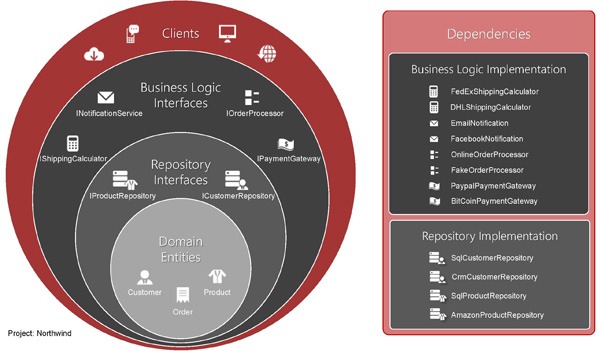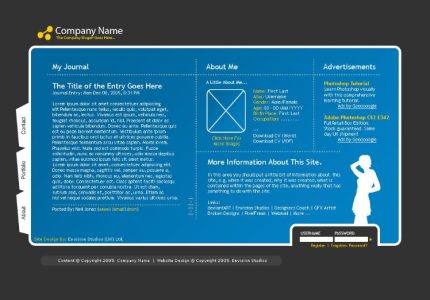Factors Influencing Website Design Costs
Understanding the factors that influence website design costs is essential for businesses and individuals planning to create or upgrade their online presence. Various elements such as project complexity, design requirements, and functionality significantly impact the overall expenses. By examining these key factors, one can better estimate the investment needed and make informed decisions to achieve a successful and cost-effective website.
Complexity of Design
The complexity of the design significantly impacts website design costs, as more intricate and detailed interfaces require additional time, resources, and expertise. Simple websites with basic layouts and limited features tend to be more cost-effective, while complex sites with custom graphics, animations, and advanced functionalities increase the overall expenses. Factors such as multi-page structures, interactive elements, and unique visual styles contribute to the challenging nature of complex designs. The need for specialized skills and extensive planning further elevates costs, making complexity a key consideration in budgeting for website development.
Number of Pages
The number of pages on a website significantly impacts the overall design costs, as each page requires individual planning, layout, and content integration. More pages mean increased workload for designers and developers, leading to higher labor costs. Additionally, maintaining consistency across multiple pages adds to the complexity and time needed for design and development. The size of the website also influences the choice of design elements, navigation structure, and functionality, which can further affect costs. Generally, small websites with few pages are more budget-friendly, while larger, multi-page websites demand a higher investment due to the extensive work involved in creating a cohesive and functional user experience.
Functionality and Features
The cost of website design is largely influenced by various factors related to the complexity, functionality, and features of the website. Understanding these factors can help in estimating the overall expenses involved in creating a professional and effective site.
- Scope of the Project: The size and purpose of the website, such as a simple brochure site or an extensive e-commerce platform, significantly impact costs.
- Design Complexity: Custom designs and unique branding elements require more time and expertise, increasing the price.
- Number of Pages: More pages mean additional design work and content creation, which can raise costs.
- Functionality and Features: Advanced features such as user login, booking systems, payment gateways, and interactive elements add to the complexity and expenses.
- Content Management System (CMS): Choosing a more robust CMS or custom backend development can influence costs, especially if extensive customization is needed.
- Responsive Design: Ensuring compatibility across devices and screen sizes might require additional development efforts, affecting the budget.
- Integration with Third-party Services: Incorporating external tools like CRM systems, analytics, or marketing platforms can increase the cost due to integration complexity.
- SEO Optimization: Investing in search engine optimization features and strategies also influence the overall cost.
- Developer and Designer Rates: The hourly or project-based rates of professionals involved will directly affect the total cost.
- Maintenance and Updates: Ongoing support, security updates, and future enhancements should be considered when assessing total costs.
Customization Level
The level of customization in website design significantly impacts the overall costs. Tailored designs that require unique graphics, layouts, and functionalities tend to be more expensive than template-based solutions. This customization not only involves more design work but also often requires specialized development skills, which can increase labor costs.
- Complexity of Features: Incorporating advanced features such as e-commerce capabilities, client portals, or booking systems increases development time and costs.
- Design Complexity: Unique, intricate designs with custom animations or graphics demand more resources compared to simple, straightforward layouts.
- Content Management System (CMS) Customization: Customizing or building a CMS from scratch adds to costs, whereas using off-the-shelf solutions is typically cheaper.
- Integration Requirements: Linking the website with third-party services or APIs can add to the development complexity and expenses.
- Responsive Design: Ensuring the website is optimized across multiple devices involves additional design and testing efforts, influencing the overall cost.
Use of Premium Themes and Templates
One significant factor influencing website design costs is the use of premium themes and templates. These professionally designed themes often come with advanced features, customizations, and a polished appearance, which can reduce the time and effort required for development. While free themes may suffice for simpler projects, premium options typically offer more sophisticated functionality and aesthetic appeal, enhancing the overall quality of the website. However, investing in premium themes can increase initial costs and may also entail additional expenses for customization and integration to ensure the design aligns perfectly with the brand’s identity and goals. Consequently, choosing between free and premium themes impacts the overall budget and complexity of the website design process.
Types of Website Design Costs
Understanding the various costs associated with website design is essential for planning and budgeting effectively. These costs can vary widely depending on factors such as complexity, features, and the level of customization required. By exploring the different types of website design expenses, businesses and individuals can better prepare for a successful online presence.
Hourly Rates vs. Fixed Pricing
When considering the costs of website design, it is important to understand the different pricing models available. Two common approaches are hourly rates and fixed pricing, each with its own advantages and considerations.
Hourly rates involve paying a set fee for each hour spent on designing the website. This model offers flexibility and is suitable for projects that require ongoing adjustments or have uncertain scope. Clients can track the total hours worked, ensuring transparency and the ability to control expenses.

Fixed pricing, on the other hand, entails a predetermined total cost for the entire project. This approach provides budget certainty and simplifies planning, as clients know the exact amount they will pay regardless of the time spent. Fixed pricing is often favored for well-defined projects with clear requirements, reducing the risk of unexpected expenses.
Both pricing models impact the overall cost of website design, with hourly rates potentially leading to variable costs and fixed pricing offering predictability. The choice between the two depends on project scope, flexibility needs, and the client-designer relationship.
Design Agency vs. Freelance Developers
Website design costs can vary significantly depending on the approach chosen, whether working with a design agency or hiring freelance developers. These costs encompass several factors, including planning, design, development, testing, and ongoing maintenance. Understanding the different types of costs involved helps businesses budget effectively for their online presence.
Design agency costs tend to be higher due to their comprehensive services, experienced professionals, and often include project management, custom design, SEO optimization, and post-launch support. Agencies typically charge a fixed project fee or hourly rates that reflect their expertise and resources, ranging from a few thousand to tens of thousands of dollars. This option is suitable for businesses seeking a polished, professional website with advanced features.
Freelance developers usually offer more affordable rates, with costs influenced by their experience, location, and project scope. Freelancers often charge hourly or project-based fees that can be lower than agencies, making them an attractive choice for small businesses or startups with limited budgets. However, working with freelancers may require more involvement from the client to manage various aspects of the project and ensure quality standards.
In summary, website design costs vary based on the complexity, features, and level of service desired. Agencies provide comprehensive, high-end solutions at a premium price, while freelance developers offer more budget-friendly options with flexibility. Choosing the right approach depends on the specific needs, budget, and goals of the business.
In-house vs. Outsourced Design
When considering the costs of website design, businesses often compare in-house development with outsourcing to external agencies or freelancers. In-house design involves expenses related to hiring full-time or part-time designers, providing necessary tools and software, and ongoing training. This approach can lead to higher fixed costs but offers greater control and immediate access to the design team. In contrast, outsourced design typically involves project-based payments or hourly rates paid to external professionals or agencies, which can be more flexible and scalable depending on the project’s scope. Outsourcing may reduce overhead costs associated with hiring and maintaining an in-house team but sometimes involves coordination and communication expenses that can impact the overall budget. Understanding these cost structures helps businesses choose the most suitable approach based on their budget, project complexity, and long-term goals.
Cost Breakdown Components
Understanding the cost breakdown components is essential when evaluating the expenses involved in website design. These components help clarify how different elements such as planning, development, and additional features contribute to the overall budget. By breaking down these costs, clients can better plan and allocate resources effectively for their website project.
Design and Layout
Cost breakdown components in website design include several key elements that contribute to the overall expense. These typically encompass design and layout, development, content creation, hosting, and maintenance. Design and layout specifically refer to the visual structure and user interface of the website, which greatly influence both the user experience and the cost involved. Effective design and layout require skilled designers to create visually appealing and functional interfaces that align with branding requirements. The process involves planning the structure, selecting color schemes, typography, and arranging content to ensure clarity and accessibility. A well-thought-out design can enhance user engagement and reduce ongoing adjustments, making it a vital component in the total cost of website development.
Development and Coding
Cost breakdown components for website design primarily include development and coding, which are essential to bringing the visual and functional aspects of a website to life. Development involves creating the structural framework, ensuring the site functions smoothly, and integrating necessary features. Coding encompasses writing the code in languages such as HTML, CSS, JavaScript, and server-side languages to develop interactive and dynamic elements. These components require skilled developers and coders, whose expertise impacts the overall project cost. Efficient development and precise coding are crucial for ensuring a responsive, secure, and user-friendly website, making them significant factors in the total cost of website design.
Content Creation
Content creation is a vital component of the overall cost of website design, encompassing all the materials needed to effectively communicate your message and engage visitors. This includes writing and editing copy, designing visual elements such as images and graphics, and producing multimedia content like videos or animations. The complexity and volume of content directly impact the expenses involved, as high-quality, customized content requires skilled professionals and significant time investment. Proper planning and strategic content development help ensure that the website not only looks appealing but also fulfills its purpose, ultimately influencing the total cost involved in website design projects.
SEO Optimization
The cost breakdown components of website design typically include several key elements that collectively determine the total expense. These components encompass design and development fees, which cover the creation of the website’s layout, functionality, and user interface. Additionally, content creation costs involve the development of text, images, videos, and other multimedia assets tailored to the site’s purpose. Hosting fees represent the charges for server space and bandwidth to keep the website accessible online. Maintenance and updates are ongoing costs associated with keeping the website secure, functional, and up-to-date. Finally, SEO optimization expenses are essential to improve the website’s visibility in search engine results, including activities like keyword research, on-page SEO, backlinking, and technical SEO improvements that enhance organic traffic and overall performance of the site.
Testing and Launch
When considering the costs of website design, it is essential to understand the various components that contribute to the overall budget. The cost breakdown includes design and development expenses, which cover creating the website’s layout, coding, and functionality. Additionally, content creation, such as text, images, and videos, adds to the cost. Hosting and domain registration fees are ongoing expenses necessary to keep the website accessible online. Maintenance costs, including updates and security measures, should also be factored in. These components together determine the total investment needed for a successful website project.
Testing is a critical phase in website design that ensures the site functions correctly across different devices, browsers, and user scenarios. This process involves identifying and fixing bugs, verifying responsiveness, and optimizing load times. Proper testing helps prevent post-launch issues and enhances user experience, ultimately saving costs associated with troubleshooting and redesigns later on. It often involves multiple rounds of review, feedback collection, and adjustments.
The launch stage involves deploying the website to a live server and making it accessible to users. This step includes final checks, migration of files, configuring domain settings, and ensuring that all features work as intended in the production environment. During launch, developers may also implement analytics tools to monitor traffic and performance from the outset. Effective planning and execution during this phase are vital to minimize downtime and ensure a smooth transition for visitors, supporting the website’s long-term success.

Additional Expenses to Consider
When planning for website design, many focus on the primary development costs but often overlook additional expenses that can arise. These supplementary costs are crucial to consider for a comprehensive budget, ensuring a smooth project execution and long-term success. Understanding these extra expenses helps in avoiding unexpected financial hurdles and facilitates better resource allocation throughout the website development process.
Domain Name Registration
When planning the costs of website design, it is important to account for additional expenses such as domain name registration. Securing a domain name is a crucial step in establishing an online presence and typically involves an annual fee that varies depending on the domain extension and registrar chosen. Premium domain names may incur higher costs, while some providers offer discounts for first-time registrations or long-term commitments. Additionally, renewal fees should be considered to ensure continued ownership of the domain. Selecting the right domain name and registrar can impact your overall budget and brand visibility, making it a vital element in the website design financial planning process.
Web Hosting
When calculating the total costs of website design, it is important to consider additional expenses beyond initial development. One significant expense is web hosting, which provides the server space necessary to keep the website accessible on the internet. Reliable hosting services often come with varying price points depending on bandwidth, storage, and support features, so selecting the right provider can influence ongoing costs. Additionally, premium hosting options such as VPS or dedicated servers may be required for high-traffic websites, further increasing expenses. Budgeting for web hosting ensures the website remains operational and accessible, avoiding downtime and performance issues that could impact user experience and overall success.
Maintenance and Updates
When calculating the overall costs of website design, it is important to include additional expenses such as maintenance and updates. Keeping a website functional and secure requires regular attention to ensure compatibility with evolving technologies and standards. This ongoing process often involves software updates, security patches, and performance optimization, which can incur costs either through in-house resources or third-party service providers.
Budgeting for maintenance also involves addressing potential content updates, design tweaks, and troubleshooting issues that may arise over time. These activities are essential to maintaining user engagement and ensuring the website continues to meet business objectives. Planning for these recurring expenses helps avoid unexpected costs and keeps the website running smoothly and securely in the long term.
Licensing for Software and Plugins
When planning the costs of website design, it is essential to account for additional expenses related to licensing for software and plugins. These licenses are often required to access premium features, professional tools, or specialized functionalities that enhance the website’s performance and user experience. Licensing fees can vary depending on the software provider, the number of users, or the extent of features needed. It is important to consider these ongoing costs as part of the overall budget to ensure the website remains updated, secure, and fully functional. Neglecting to include licensing expenses may lead to unexpected expenses and potential disruptions in the website’s operation.
Marketing and Promotion
When budgeting for website design, it’s important to account for additional expenses related to marketing and promotion to ensure the site’s success and visibility. These costs can significantly impact the overall budget but are essential for attracting visitors and increasing engagement.
- Search Engine Optimization (SEO) Services: Improving your website’s ranking on search engines often requires investment in SEO strategies, tools, and expert assistance.
- Content Creation and Copywriting: High-quality content, including articles, blog posts, videos, and graphics, helps attract and retain visitors.
- Online Advertising: Paid campaigns such as Google Ads, social media ads, and display banners can drive targeted traffic to your site.
- Social Media Management: Creating and maintaining active social media profiles may involve hiring professionals or subscribing to management tools.
- Email Marketing: Building and nurturing an email list through campaigns and newsletters requires investment in email marketing platforms.
- Influencer and Affiliate Marketing: Collaborating with influencers or setting up affiliate programs can boost your website’s reach.
- Analytics and Monitoring Tools: Investing in analytics software to track visitor behavior and measure marketing effectiveness translates into better strategic decisions.
- Branding and Graphics Design: Developing a cohesive brand identity, including logo design, banners, and promotional visuals, adds to the promotional expenses.
Budget Ranges for Website Design
Understanding the various budget ranges for website design is essential for planning a successful online presence. Whether you’re a small business owner or an individual looking to establish a personal site, knowing the typical costs associated with different levels of website design can help you make informed decisions. Budget considerations often influence the complexity, features, and quality of the final product, making it important to identify what fits within your financial plan.
Basic Websites
Budget ranges for basic website design typically vary depending on the complexity and features required. For small businesses or individuals seeking a simple website, costs usually start around $500 to $1,500. These basic websites often include essential pages such as Home, About, Services, and Contact, and may utilize pre-designed templates or minimal customization. As the complexity increases, including custom designs, additional functionalities, or content management systems, the price can range from $1,500 to $5,000. It’s important to consider ongoing costs for hosting, domain registration, and future updates when planning a website budget.
Small Business Websites
Budget ranges for small business website design can vary significantly depending on the complexity and features required. Basic websites, including a few pages with standard templates, typically cost between $500 and $2,000. These often suit startups or small businesses looking for an online presence without extensive customization.
For more customized designs, incorporating custom graphics, tailored functionality, or a content management system, costs generally range from $2,000 to $10,000. These websites may include e-commerce capabilities, booking systems, or other advanced features tailored to specific business needs.
High-end or complex websites, which involve extensive development, customized features, ongoing support, and strategic branding, can cost $10,000 or more. These projects are often handled by professional agencies and are suited for businesses that require a unique, scalable, and highly functional online platform.
Medium-Sized E-commerce Sites
Budget ranges for designing medium-sized e-commerce websites typically vary based on complexity, features, and customization requirements. For a basic to moderately complex site, costs generally start around $10,000 and can go up to $50,000. This range includes essential design elements, product pages, shopping cart functionality, and integrated payment systems. Mid-tier projects with customized designs, advanced features like personalized experiences or internationalization can range from $50,000 to $100,000. High-end medium-sized e-commerce sites with extensive features, dedicated development teams, and ongoing support may exceed $100,000. It is important to consider additional expenses such as hosting, maintenance, and marketing when planning the overall budget for a website.
High-End Custom Websites
High-end custom websites typically involve a significant investment due to their tailored features, sophisticated design, and advanced functionalities. The budget for such projects generally ranges from $10,000 to $50,000 or more, depending on the complexity and specific requirements.
Factors influencing the cost include the level of custom graphic design, the number of pages, integrations with third-party systems, and the need for unique features or e-commerce capabilities. Companies seeking a premium online presence often work with skilled designers and developers to ensure a seamless, visually compelling, and highly functional website, which naturally increases the overall expense.
While small or template-based websites can cost as little as a few hundred dollars, high-end projects are an investment in branding, user experience, and future scalability. Businesses should consider these costs as part of their broader marketing and growth strategy, recognizing that a well-crafted, high-end website can deliver substantial long-term value.
Cost-Saving Tips and Strategies
Creating a website involves various costs, from design and development to ongoing maintenance. To maximize your budget and achieve a professional online presence, it’s essential to explore effective cost-saving tips and strategies. By identifying smart approaches, you can reduce expenses without compromising quality, ensuring your website is both functional and cost-efficient.
Using Templates and Themes
Implementing cost-saving tips and strategies in website design can significantly reduce expenses while maintaining quality. Utilizing templates and themes is an effective approach to streamline the design process and minimize costs. Templates provide ready-made layouts that can be easily customized, saving time and design resources. Themes offer cohesive styles and functionalities that eliminate the need for extensive coding or hiring specialized developers. By selecting high-quality, customizable templates and themes, businesses can achieve a professional look without costly design services. Additionally, leveraging these tools allows for quick updates and scalability, ensuring that the website remains current and functional as the business grows. Combining strategic template and theme choices with other cost-efficient practices can optimize website development budgets and deliver a compelling online presence.
Outsourcing Parts of the Design Process
Outsourcing parts of the design process can significantly reduce overall website development costs. By delegating specific tasks such as graphic design, coding, or content creation to specialized agencies or freelancers, businesses can access expertise without the need to hire full-time staff. This approach allows for flexibility in resource allocation and can lead to more efficient project completion within a limited budget.
Another cost-saving strategy is to collaborate with remote or offshore teams, which often offer competitive rates compared to local agencies. Carefully managing communication and quality assurance ensures that the outsourced work meets your standards, preventing costly revisions later. Additionally, leveraging pre-designed templates and frameworks can lower initial design expenses and accelerate the development timeline.
Investing in clear project scope and detailed specifications upfront can help avoid scope creep and additional expenses. Utilizing project management tools and regular updates ensures timely completion and resource optimization. Overall, strategic outsourcing combined with thoughtful planning can deliver high-quality websites at a fraction of traditional costs, making it an effective approach for budget-conscious projects.
Prioritizing Essential Features
Managing the costs of website design can be challenging, but focusing on essential features can significantly reduce expenses while still delivering a functional and effective site. Prioritizing what truly matters ensures your budget is allocated wisely and prevents unnecessary spending.
- Identify Core Goals: Clearly define what your website needs to achieve and focus on features that support these objectives.
- Use Pre-designed Templates: Opt for customizable templates from reputable platforms to save time and money on design and development.
- Limit Customization: Only incorporate custom features when absolutely necessary, and rely on standard functionalities that are included in templates or plugins.
- Choose Cost-Effective Hosting Options: Select hosting plans that meet your current needs but are scalable for future growth, avoiding overspending on high-end plans initially.
- Focus on Mobile Responsiveness: Ensure the essential features are mobile-friendly, which is often integrated into modern templates, reducing additional development costs.
- Prioritize User Experience: Streamline navigation and make key information easily accessible to enhance user engagement without extensive design overhauls.
- Leverage Open Source Tools: Use free or low-cost open source plugins and tools to add necessary functionalities without additional licensing fees.
- Plan for Future Growth: Design with scalability in mind, phasing in non-essential features later when budget allows.
- Limit Content Volume Initially: Keep initial content simple and concise, expanding over time instead of overloading at launch.
- Regularly Review and Optimize: Continuously assess website performance to eliminate underused features and focus on those delivering value.
Ongoing Maintenance Planning
Implementing effective cost-saving tips and ongoing maintenance strategies can significantly reduce the overall expenses associated with website design and management. Proper planning ensures that budgets are managed efficiently while maintaining a high-quality online presence.
- Prioritize a clear and concise design to avoid unnecessary complexity and additional development costs.
- Choose a flexible and scalable Content Management System (CMS) that allows for easy updates without frequent developer intervention.
- Use pre-designed templates or themes that align with your brand to minimize custom design expenses.
- Establish a routine maintenance schedule to identify and resolve issues early, preventing costly repairs later.
- Regularly update software, plugins, and security features to protect against vulnerabilities and reduce downtime.
- Optimize website performance by compressing images and minimizing code, which lowers hosting and bandwidth costs.
- Implement analytics to monitor visitor behavior and performance, helping to focus maintenance efforts effectively.
- Train in-house staff or interns for routine updates and content management, reducing reliance on external developers.
- Plan for long-term scalability and budget for future enhancements to avoid expensive overhauls.
- Establish a clear documentation process to streamline ongoing maintenance and reduce miscommunication or errors.
Effective ongoing maintenance is essential for controlling costs in website design projects. Regular updates, security checks, performance optimization, and staff training contribute to sustainable and budget-conscious website management.





